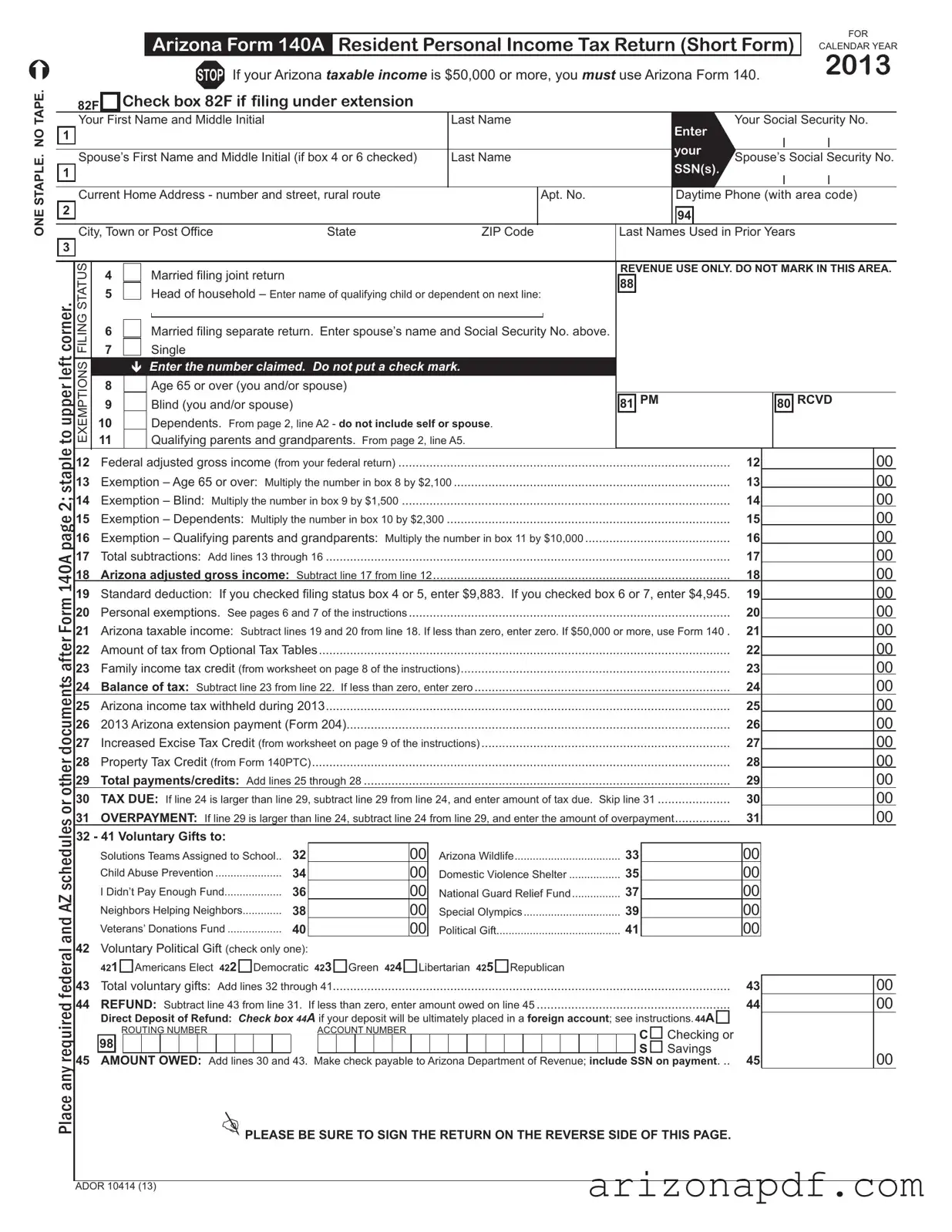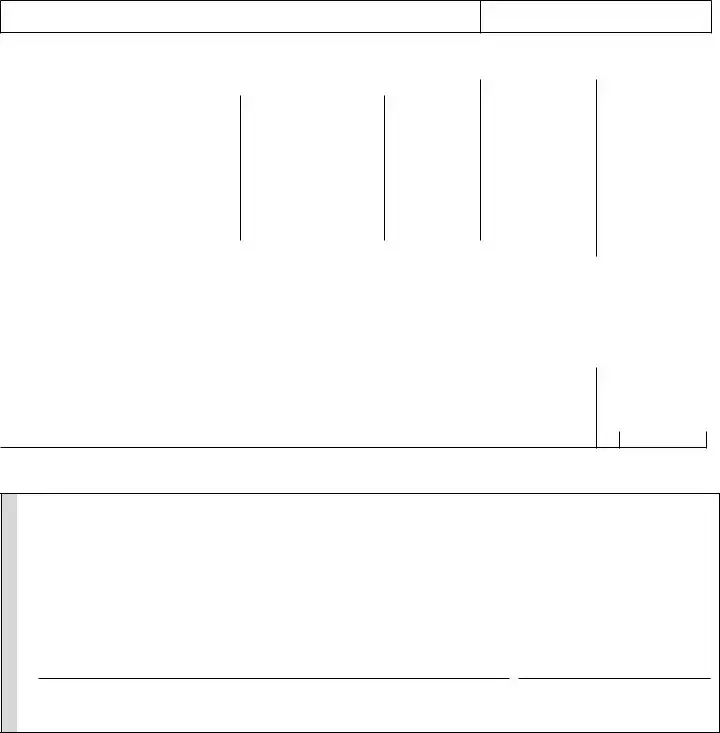Who is eligible to use the Arizona Form 140A?
Arizona Form 140A, known as the Resident Personal Income Tax Return (Short Form), is designed for residents whose Arizona taxable income is less than $50,000 for the year. This form is available for individuals who choose the standard deduction and have income primarily from wages, salaries, tips, scholarships, grants, unemployment compensation, or Alaska Permanent Fund dividends.
Can I file Arizona Form 140A if I am married?
Yes, married individuals can file Arizona Form 140A. Options include filing a joint return with your spouse (status 4) or filing separately (status 6). Do note, if you are filing separately, you must include your spouse's name and Social Security Number on the form.
What should I do if I have dependents?
If you have dependents, such as children, or qualify for exemptions for parents and grandparents, you'll need to provide their information in the designated sections of Form 140A. For dependents, list them in section A1 and enter the total number in box 10 on the first page. For qualifying parents and grandparents, list them in section A4, and enter the total number in box 11 on the first page. Remember, these exemptions can lead to deductions, reducing your taxable income.
How do I claim exemptions for being over 65 or blind on Form 140A?
Exemptions for age 65 or over and blindness are provided on Form 140A. If you or your spouse meet these criteria, indicate the number in boxes 8 and 9, respectively. Then calculate the exemption amount by multiplying the number of exemptions by the designated amount - $2,100 for age 65 or over and $1,500 for blindness - and include these in your deductions.
What is the process for claiming credits like the Family Income Tax Credit or Increased Excise Tax Credit?
To claim credits such as the Family Income Tax Credit or the Increased Excise Tax Credit on Form 140A, you'll need to follow the instructions and fill out the corresponding worksheets provided in the form's instructions. These worksheets will help you calculate the amount of credit you're eligible for, which you then enter on the lines provided (line 23 for Family Income Tax Credit and line 27 for Increased Excise Tax Credit).
Where should I send Arizona Form 140A if I'm expecting a refund or owe no tax?
If you are expecting a refund or do not owe any tax, or even if you owe tax but are not including payment, you should mail your completed Arizona Form 140A to the Arizona Department of Revenue at PO Box 52138, Phoenix, AZ, 85072-2138. Ensure all necessary documentation is included and that the form is signed.
What should I do if I need to make a payment with my Arizona Form 140A tax return?
If you owe taxes and are including a payment with your Arizona Form 140A, you should send your tax return and payment to the Arizona Department of Revenue, PO Box 52016, Phoenix, AZ, 85072-2016. Make sure your payment is in the form of a check or money order payable to the Arizona Department of Revenue, and include your Social Security Number on the payment to ensure proper processing.


